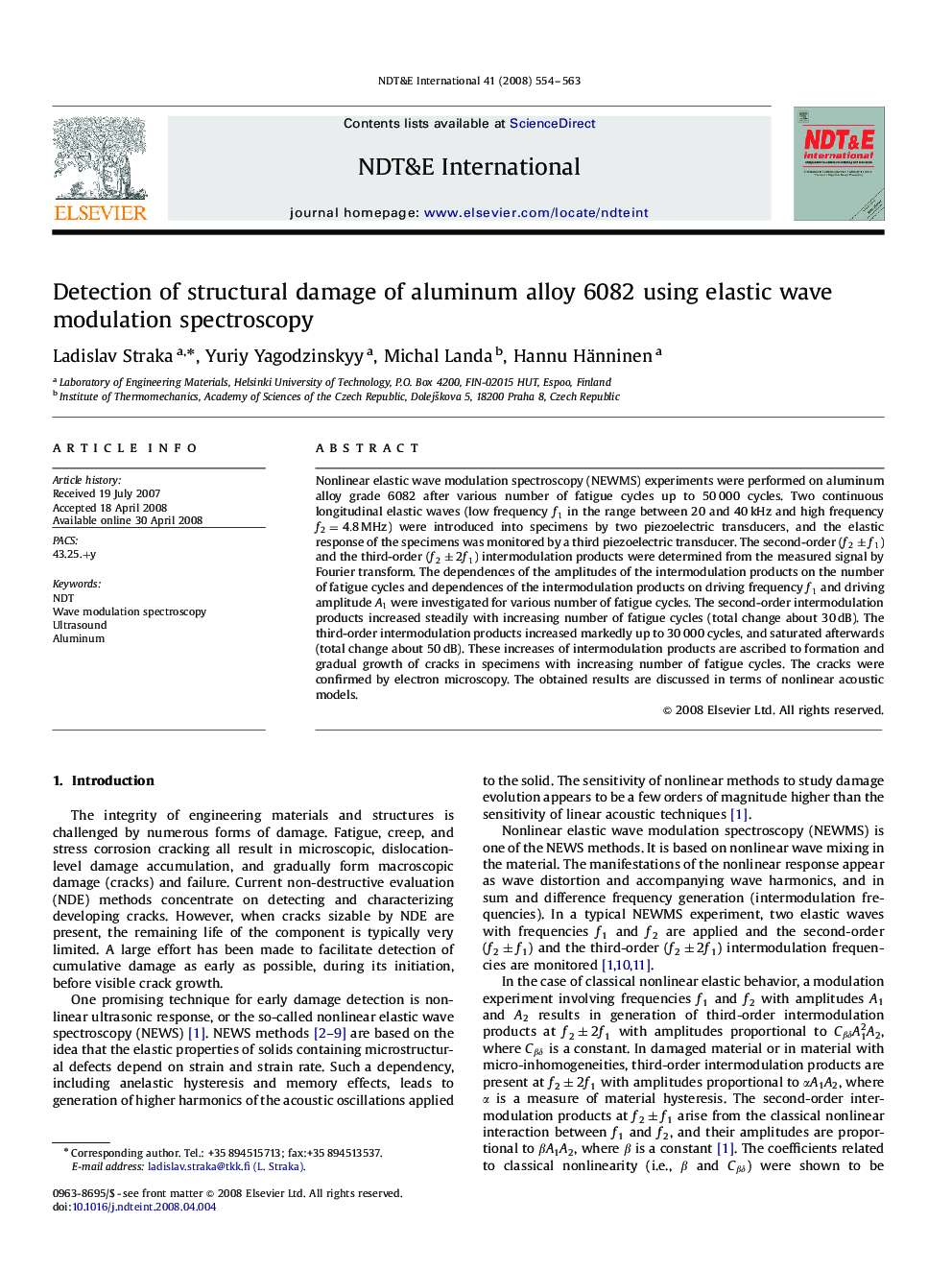| Article ID | Journal | Published Year | Pages | File Type |
|---|---|---|---|---|
| 295463 | NDT & E International | 2008 | 10 Pages |
Nonlinear elastic wave modulation spectroscopy (NEWMS) experiments were performed on aluminum alloy grade 6082 after various number of fatigue cycles up to 50 000 cycles. Two continuous longitudinal elastic waves (low frequency f1f1 in the range between 20 and 40 kHz and high frequency f2=4.8MHz) were introduced into specimens by two piezoelectric transducers, and the elastic response of the specimens was monitored by a third piezoelectric transducer. The second-order (f2±f1f2±f1) and the third-order (f2±2f1f2±2f1) intermodulation products were determined from the measured signal by Fourier transform. The dependences of the amplitudes of the intermodulation products on the number of fatigue cycles and dependences of the intermodulation products on driving frequency f1f1 and driving amplitude A1A1 were investigated for various number of fatigue cycles. The second-order intermodulation products increased steadily with increasing number of fatigue cycles (total change about 30 dB). The third-order intermodulation products increased markedly up to 30 000 cycles, and saturated afterwards (total change about 50 dB). These increases of intermodulation products are ascribed to formation and gradual growth of cracks in specimens with increasing number of fatigue cycles. The cracks were confirmed by electron microscopy. The obtained results are discussed in terms of nonlinear acoustic models.
